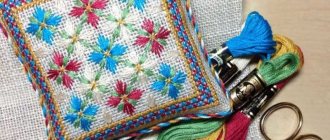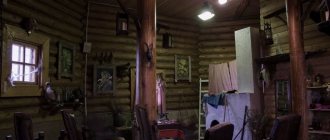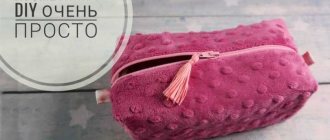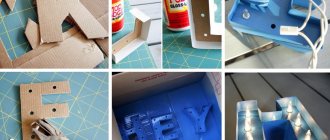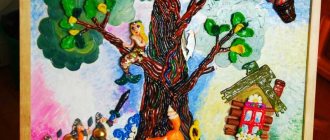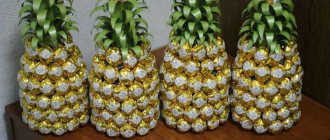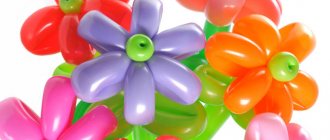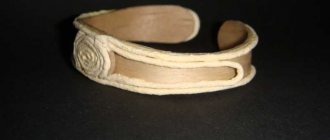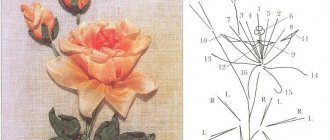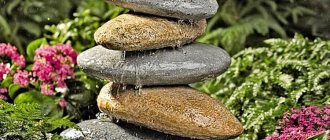A tank is a combat vehicle with armor. It often moves on a caterpillar, with cannon armament, but sometimes with a machine gun. The main task of the tank is direct fire.
There are many computer or tabletop role-playing games. The legendary tank is the Soviet T-34. The medium tank was used quite a few times during the Second World War. It went into serial production in 1940.
Fans of the development of the design bureau of the tank department are happy to play virtual games featuring their favorite structures. Hobbyists are invited to make tank crafts from various materials.
This is precisely the purpose of this article. In the following parts we will look at methods and options for making a tank using paper, cardboard, plasticine and more. Perhaps the most ideal option is creativity from Lego. Original, fast, sustainable.
Advantages of homemade tanks
Gone are the days when toy tanks were made of metal. Current models are made from composite materials, which makes them not very durable. On the other hand, some homemade tanks do not last long at all. However, this does not deprive them of the following advantages:
- There is plenty of room for imagination - a tank can be made with two or three muzzles, a radio tower, a turret, robot limbs, etc.
- Availability - improvised materials are used to make a tank (plasticine, matchboxes, plastic bottles, plywood);
- Light weight - this property prevents injuries.
If desired, you can use several worn out or unnecessary machines to assemble one tank. Nobody canceled the integration of an electric motor. However, it is better to start such projects after making lightweight models.
Hobby
Whatever your hobby is, whatever you collect, it should be enjoyable. A numismatist calms down and rests when he cleans his coins, a philatelist remembers how this or that stamp came into his possession, each such story is dear to him. A weapons collector knows everything about his weapons: what battles they participated in, what they are famous for, what areas are weak and what are strong.
So the collector of tank models falls in love with the equipment, imagines himself as a crew commander, a driver, or a gunner. He knows what engine was installed, what tests were carried out. Knows the tactical and technical characteristics and places of military glory and shame. Knows the best tankers and the best shots. Starts to think about how this or that model can be improved. This is not necessary to know, but for a collector it is a given. If you don’t have such a desire, then tanks are very good as toys!
Tank dimensions
It is clear that a tank craft for a kindergarten or apartment should not clutter up a lot of space. This rule is explained by the need to use a themed toy in the plural to conduct battles or display as an exhibit.
In the latter case, the tank can still be increased to the size of a compact portable speaker. But for battles, the area of the case should not exceed the dimensions of a smartphone. Even compact solutions are welcome - 50x100 mm. Moreover, the height, depending on the purpose of the product (exhibit, combat toy), can be different - from 40 to 150 mm.
Beautiful tank made using origami technique
Yes, the most favorite and simplest technique is origami crafts. Children and even some adults love them. In this chapter, you will find folding diagrams that any beginner or even a student can understand.
And here is another toy, called Abrams, a little prettier than the previous one. Catch and use these tips, everything should work out.
Using plasticine is a good start
The easiest way to make crafts is from plasticine, tanks and more. Thematic material, under the pressure of your fingers, easily takes on the desired shape and generally comes apart easily. The main thing is that the plasticine is for children, and the child is 6 years old. The following products meet these requirements:
- "Gamma";
- “Ray” – Modeling Clay;
- "Colibri";
- "1Veresnya";
- "Fantasy World";
- "Olli"
- "Color".
The listed brands produce safe plasticine without a strong chemical odor.
Modeling a tank from plasticine
Although plasticine is easy to bend and unbend, making a tank from a themed material can be challenging. Therefore, it is better to divide the corresponding process into several stages:
- Drawing of the tank for visual reproduction;
- Dividing green plasticine into three unequal parts - for sculpting the barrel, tower, body;
- Direct modeling of the barrel, tower, body;
- Dividing black plasticine into eight to ten parts - for sculpting wheels;
- Directly sculpting the wheels;
- Connection of all parts;
- Modeling a red star with subsequent decoration of the product.
Children's sets mostly come without black plasticine. It can be created by mixing blue and orange or red and green pieces.
How to draw a Tank: draw with paints and pencils
Almost all children dream of learning to draw. Girls draw flowers and dolls, and boys’ favorite themes are tanks, planes, cars. Such skills will come in handy in drawing lessons, or when you want to make a card for dad on February 23rd.
Pencil drawing of a tank for children
There are a lot of tanks and there are quite a few options for how to draw one.
Pictures of tanks with simple details are suitable for kids.
If you draw more details of the tank, you can depict a specific model.
A plastic bottle is also good
There is definitely a lot of plastic bottles in the house. Moreover, green containers with a capacity of 0.35-0.5 liters are perfect for making a tank body. However, you shouldn’t limit yourself to one bottle. The master will have to perform the following set of works:
- Cutting a hole in a matchbox;
- Inserting a paper barrel or juice stick into the hole;
- Connecting three boxes to each other so that the box with the barrel is in the middle;
- Attaching the tower to a plastic bottle;
- Using a hot awl to poke holes in four to eight bottle caps;
- Shortening two to four kebab sticks;
- Inserting sticks into the bottom side of a plastic bottle;
- Threading kebab sticks into the holes of the plugs.
The result is a do-it-yourself tank suitable for movement. It can be covered with themed stickers like a red star.
There's no such thing as too much cardboard
In particular, we are talking about corrugated cardboard, from which boxes for shoes, electronics, etc. are made. There are always a lot of boxes themselves, and you need to take advantage of this. And since the dimensions of the cardboard box are often large, it has to be adjusted to the size of the tank:
- First, a sketch of the product is drawn;
- Next, according to the sketch, you can draw a drawing;
- The next stage is cutting out the segments so that they can be bent into the body and tower;
- Next, you need to bend the thematic fragments of the tank and glue the bottoms to them;
- After gluing the fragments to each other, corks or cut out cardboard circles are glued to the lower side of the body;
- The tower is complemented by a muzzle.
Note!
- Crafts for February 23: master class on creating interesting DIY crafts for Defender of the Fatherland Day
DIY crafts for February 14th step by step: a master class for beginners, with a description of how to make a craft for St. Valentine's Day. Valentina (140 photos)
- Crafts made from jute: 100 photos of beautiful options. Easy instructions with photos and descriptions on how to make a craft with your own hands
Such a tank is not suitable for movement, but it is easier to make than a craft made from a bottle. In addition, the cardboard tank can be painted in a characteristic color.
We create a model of the legendary T-34 tank
The inspiration for creating the model of the legendary T-34 tank was, of course, the approaching Victory Day. And the idea originated in my distant childhood, when I watched films about the war and built myself tanks from stools. Only now, when the time has come to make a toy for the children, I want it to be as similar as possible to a real tank. And for this you will need accurate calculations and construction of a layout to be sure that everything is planned correctly.
As a basis, I took the drawings that I found on the Internet and processed them to the scale I needed.
Well, actually, the first day of work.
I envisioned manufacturing the future tank in several versions:
- as a theatrical prop that can be disassembled after the performance into its main parts and put away for storage;
- as a play complex in a kindergarten or leisure center.
In the end, I decided to make the most complex version of the tank. It is based on a folding box on moving wheels.
To accurately transfer the drawing from graph paper to cardboard, I use a needle, which I use to pierce the points on the drawing. Then I connect the resulting points with a pencil. A well-sharpened pencil is precisely centered in the resulting grooves from the needle and the line is perfect.
Then I cut out the parts with a utility knife.
If there are mirror parts, then you need to first turn the cardboard over to the back side, and then make the marks from the needle through. Then turn the cardboard over again and connect the dots on the white, more visible side.
The body parts are ready. Can be glued.
A glue gun does an excellent job of this: you can simply attach two parts to each other and glue them on top like “welding.” The glue holds the parts to itself, but there are no traces of glue on the reverse side.
You can make sure that the box with wheels and the tank body fit together well. The whole difficulty of this idea is that the tank body and the folding body fit into each other and the inclined side armor plate does not interfere with the walls of the box.
Next you can assemble the tracks. The racks on which the rollers will be glued will simultaneously carry an inclined strip of armor, a splash bar, and the caterpillar itself.
You can apply glue from a glue gun directly to the end of the parts. They hold up well.
The part to which I glued the rollers is missing from the tank design. I need it to create a false wall. It is to this that the folding box in the large model will be attached.
Now I glue the track parts to the tank body, but only in the corners.
Now I start cutting out the tower. I do it according to the same scheme: I transfer it from the drawing to the cardboard with a needle, connect the lines and cut it with a knife.
Well, not without “pancakes in a coma.” Parts that will have to be bent must be cut across the grain.
To make the tower parts a little more voluminous, I decided to make additional overlays. They will create the illusion of cast metal. In these places, the turret on a real tank is rounded.
And the tower began to take on its appearance. I glued the parts from the inside so that no traces of glue were visible from the outside. But inside it can be left in large drops, so the parts adhere perfectly to each other.
In the middle of the lower part of the tower I cut a hole, which on a large model will be about 50 cm. A child can easily fit through it. And most importantly, the tower will be able to rotate. To do this, I cut out a hoop and a narrow strip from cardboard, which sets the desired height of the turret skirt, so that the turret does not fall on the armor sheet, I installed limiters.
In the meantime, the tower can be given a finished look.
Install it on the armor and play around a little.
There is still painstaking work left to make the tracks. The tracks will be fake, that is, they will not rotate. To make them look like real ones, I cut small notches on the sides at equal distances of 1 cm.
Where the caterpillar will join, I “welded” it with glue on the back side. There is no overlap of cardboard, and you won’t immediately notice the joint.
The wings consist of three parts, which I also glued on the back side with glue “welding”, which makes them look as if they were cut out of a whole piece of cardboard.
I glued the wings gradually. I folded it back, applied glue and straightened it. If you apply the glue right away, you won’t be able to glue it evenly.
The tank is almost ready! I left a rectangular hatch at the rear of the hull. Through it, a child can climb into the tank or sit on the “armor.”
But I still need a barrel, which I decided to make from a rack. To do this, I first sharpened the excess, then clamped the workpiece in a screwdriver chuck and “finished” it with sandpaper.
First I did it on coarse sandpaper, and then on fine sandpaper. The part rotates easily and can be held by hand, or a piece of plywood can be clamped next to it as a stop.
And finally, I glued the barrel to the turret.
There is also a hatch missing that will open on a large tank.
The layout is complete.
Work on the model has been completed and now we can say that everything I planned can be realized in the manufacture of a “large” tank from plywood. Its dimensions will allow the child to comfortably play and move it even in a small room, practically turning it on its heel. I didn’t paint the model, let it remain white, but the larger model will be painted in military green.
Plywood is our everything
The most durable toys are made from plywood. The latter should be of the first or second grade, so that the wooden tank does not emit an unpleasant odor. The process of making such an exhibit is as follows:
- A sketch must be drawn and a drawing drawn;
- Next, sheets of plywood are cut out according to the drawing;
- The tower and the body are assembled from sheets (it is better to assemble using short screws and glue, and you will have to make holes under the screws with a drill, and the ends of the fasteners must be blunt);
- A hole is made in the tower into which a plastic pipe or a tube from a ballpoint pen is inserted;
- Holes are made in the body for the chassis;
- A tower is attached to the body, as well as wheels from an old toy or caps from plastic bottles;
- The tank is painted and varnished if necessary.
The finished exhibit is good for both exhibition and battles. By the way, a themed toy can be supplemented with an electric motor and a movement mechanism.
We choose quality material
The main material is plywood. The choice is always difficult. Each of us has probably encountered such a problem as delamination of plywood from the end part and asked the question, what causes this delamination? Well, of course, this is mainly due to low-quality plywood. If this is not the first time you have picked up a jigsaw, then you can select plywood from the remnants of a previous craft. If you are new to sawing and you don’t have plywood, then buy it at a hardware store. Choosing material for sawing is always difficult. You should always choose plywood carefully, often look at the defects of the wood (knots, cracks) and draw conclusions. The difficulty in choosing plywood lies in the fact that no matter how you guess at its defects and shelf life. For example, you bought plywood, cleaned it, translated the drawing and suddenly it began to delaminate. Of course, this has happened to almost everyone and it’s oh, how unpleasant. So it is better to pay attention when choosing and choose good plywood. I wrote a special Article in which all the principles of choosing plywood are described step by step.
Tin can - for armor
If the tank is relatively large, then instead of a wooden tower, you can use a can of canned peas or corn. In the photo of the craft, the tank with metal fragments looks realistic. Moreover, you can put a soldier inside the jar.
The main thing is that the edges of the container are not sharp. To do this, the cutting elements are ground, varnished or covered with soft cloth.
Crafts made with a jigsaw
Let's try to make a light craft box ourselves using a jigsaw:
The first thing to do is prepare the work area and tools. Next, you need to choose a suitable material - plywood without visible defects.
We recommend reading:
Then you need to process the workpiece with sandpaper and transfer the product template onto it, according to which the elements will be cut.
Now let's move on to the work itself: position the jigsaw perpendicular to the workpiece and carefully cut it along the contour. It is necessary to work as smoothly as possible, without making sudden movements.
Let's move on to assembling the product. Most often, PVA glue is used to connect parts together. Excess glue must be removed before it begins to dry.
Before gluing the parts, it is recommended to assemble the box and check the compatibility of the cut pieces. At this stage, you can adjust the elements if necessary.
Take a look at the photo of the finished craft made with a jigsaw! It looks very neat and attractive and can be a wonderful gift or interior decoration.
Expert opinion
Strebizh Viktor Fedorovich, leading construction foreman
We made a tank, thanks for the materials, printed it on whatman paper, it turned out beautifully, but there was little information on the assembly, especially on the body, we had to tinker, but everything was ok, thank you BIG. If you want to clarify something, please contact me!

